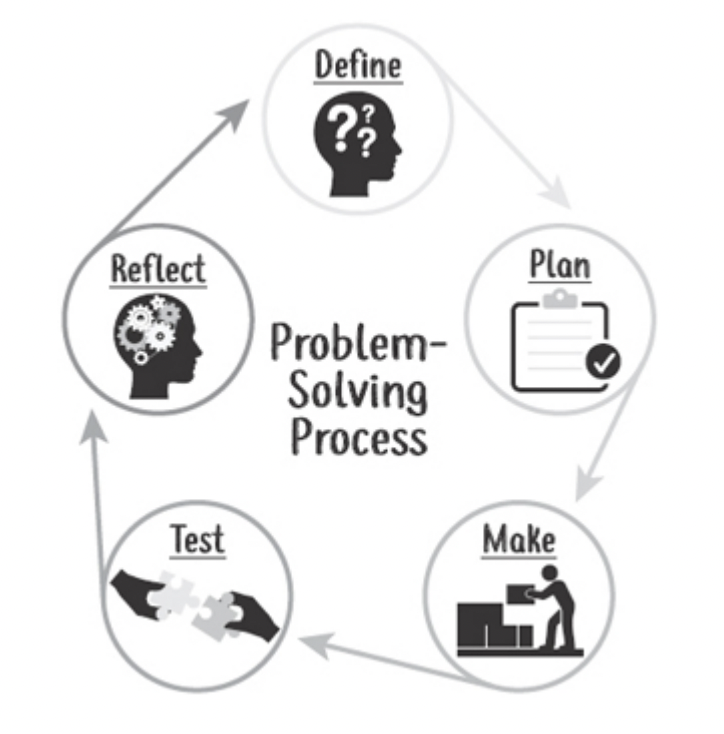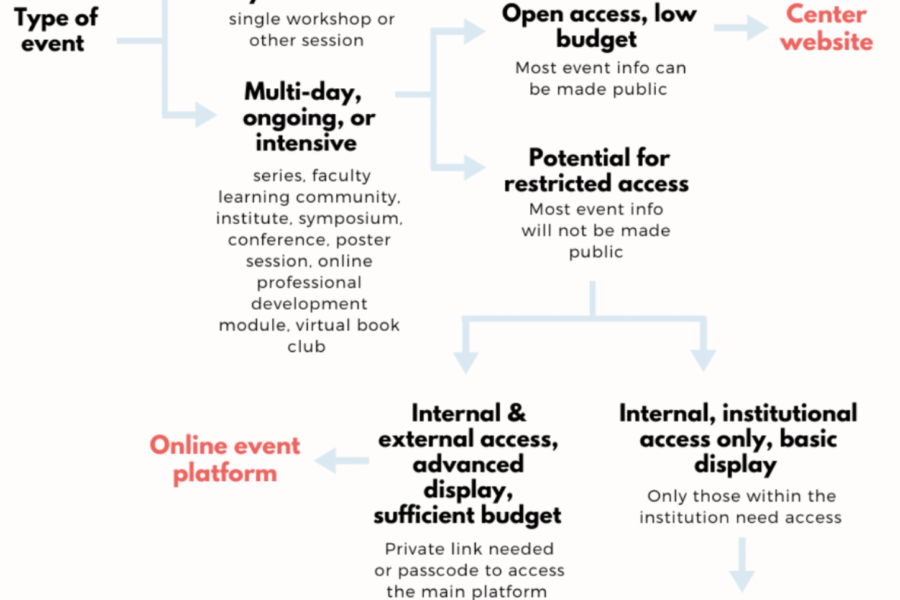Makerspaces are becoming a more popular education concept to reinvigorate and make a campus or program more responsive to student learning outside the classroom. Makerspaces are focused on making dedicated physical spaces available to students to concentrate resources and relevant communities better to help students struggling with learning concepts or to better explore their creative and innovative ideas through sharing and hands-on applications. These spaces help students become more connected and resilient through greater collaboration.
In Learning by Design Magazine, Spring 2017 they reported Makerspaces “forge new collaborations and interdisciplinary interactions across a campus … cultivation of a workforce that can work numbly in an innovation economy”. That Makerspaces, hone :
- Critical thinking
- Develop teaming skills
- Advance capabilities in the application of knowledge
- Foster self-directed learning
- Incubate student ideas into new technologies or businesses
As we exit 2022, there is greater recognition of students’ feelings of isolation and disconnection from their campus and peers, schools are focusing more on this concept to help students and for some schools to justify the value-add of an in-person campus experience. But the benefits go beyond better supporting a thriving campus; it supports social-emotional learning and inquiry-based learning. It is grounded in deep pedagogical education concepts. Although it has more traction in STEM and the sciences, Makerspaces are being embraced by the Arts to create more opportunities for building multidisciplinary collaborative efforts and more, richer community layers to their campus.
Educause defined the concept well in their 2013 article “7 Things You Should Know About Makerspaces”….
“A makerspace is a physical location where people gather to share resources and knowledge, work on projects, network, and build. Makerspaces provide tools and working room in a community environment—a library, community center, private organization, or campus. Many are primarily used for technological experimentation, hardware development, and idea prototyping, but increasingly, self-directed individual inventors and creative teams are using makerspaces to build projects in fields other than engineering and technology. Makerspaces are zones of self-directed learning, providing a physical laboratory for inquiry-based learning and validating the drive for discovery that defines the researcher and the scholar.”
How Makerspaces Work
The Makerspaces concept evolved from the hacker culture of distributed programming and leveraging different expertise to solve big problems. This is why Makerspaces are primarily associated with technological experimentation, hardware development, and idea prototyping. But self-directed individual inventors and creative teams are increasingly using these “free” spaces in combination with fee-based services in fields other than engineering and technology. In many respects, these spaces are being created within schools or campuses to incubate ideas and start-up companies to demonstrate the real world problem-solving and application fertilized by their education or curriculum.
Makerspaces are often defined by their openness for informal or unscheduled drop-ins. Networking combined with exchanging ideas, talents and skills are key. Particularly for parties to efficiently explore and find connections that may lead to breakthroughs or a dialectic of higher learning or technological breakthrough. In some cases, an organization will host scheduled classes or presentations in a Makerspace to inspire or provide different perspectives to inspire different approaches.
As Makerspaces are most associated with hard science or hands-on applications, there is a great deal of focus on providing associated amenities ie computing, woodcutting, soldering or supplies such as cardboard, plastic, metal, gears, wood, and batteries may be on hand, and available tools may include anything from a welding machine to a laser cutter. But certain materials and tools are emblematic of Makerspaces, such as 3D printers, valuable for fast prototyping. As the notion of providing space for project design and construction has caught on in education, such places have acquired other tools, from paints and easels and impromptu stage sets to cooktops and candy molds. Used by students, faculty, and staff, Makerspaces have become arenas for informal, project-driven, self-directed learning, providing a workspace to tinker, try solutions, and hear input from colleagues with similar or differing interests.
Best Practices for Designing Makerspaces
One of the key takeaways from the Learning by Design article “Higher Education Makerspaces: Engaged students, Hands on Skills and Interdisciplinary connections” is to ensure the space is generously large and adaptable to change. That the space will be under continuous updating with the leading tools, but also needs to accommodate large student bodies and a broad range of projects serving ideally the entire campus.
Key best practices highlighted:
- Plan for adaptability and flexibility. The space must be responsive to student needs and the latest learning tools and learning objects.
- Space needs to be generous, technologically rich and interactive
- Have open spaces that can accommodate larger groups and be able to expand easily on demand, avoid silos
- Make it easy for people to be aware of each other’s projects / research interests and for them to find each other easily.
- Make it easy for people to have a dialogue around each other’s projects and to share diverse perspectives
- Encourage diverse academic and experiential backgrounds to connect and to form groups to explore problem solving, meaning enable for outside experts from other institutions or the private sector to be accessible
Makerspaces offer incredible opportunities for enriching student learning and campus community vitality, however creating such physical spaces, and then maintaining them is challenging. This is particularly difficult with a limited budget and resources.
Challenges of Physical Makerspaces
The challenge for many campuses and programs who recognize and embrace the educational benefits and the basic philosophy of self-directed learning inherent in Makerspaces are often challenged with their implementation from:
- Limited available space and suitable space that is centrally located
- Cost to renovate and maintain Makerspaces
- Staffing support and speciality expertise
- Hours of availability and scheduling resources
- Control of participant access & security
- Uncertainty how a Makerspace should be configured and how wide or narrow should the space serve ie program, faculty or campus basis.
- Should the space be singular disciplinary or multi-disciplinary and if so, what disciplines
- How do student’s share their ideas and their work and balance between the openness of free collaboration and the protection of intellectual property.
- Programming of regular scheduled workshops or presentations
- How is student/user networking facilitated, curated and maintained, with peers, faculty, domain experts and outside industry experts.
These major challenges of implementing even the most basic Makerspace illustrate why higher education should be considering to at least offer Makerspaces online:
- either in support of the physical Makerspace, or
- to help them initially start the process to eliminate the risks of poorly designing the physical Makerspace without enough experience of what will work for that institution.
Try Online or Hybrid Makerspaces First
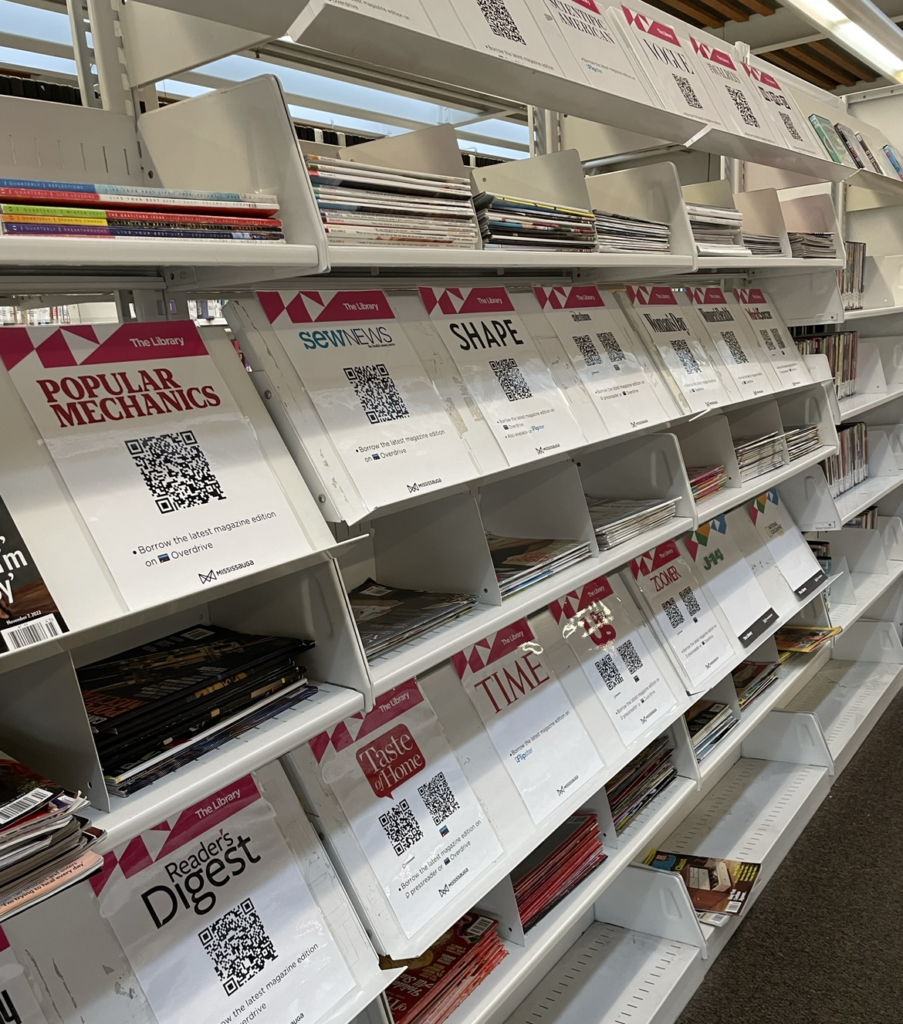
As powerful as a Makerspace is, many of the benefits from the collaboration, networking and sharing of ideas can be achieved in customized online spaces at a fraction of the cost and time required to implement a physical space. Makerspace platforms such as Acadiate are designed for quick and easy deployment. Maintenance is easy and can be managed centrally or dispersed to many stake holders. This enables for them to evolve and grow based on actual student usage patterns that are often changing and unpredictable.
This is why many schools and programs strategically deploy their Makerspace first online or lay a hybrid or online layer on top of the physical space. The beauty of platforms like Acadiate is they are infinitely customizable and robust to incorporate the latest new learning tools and the “Best of the Web” to ensure students can explore, learn, make, and share. This allows schools to make more informed, data-driven investments in their Makerspace initiatives.
The ICCIT program at the University of Toronto, leveraged Acadiate to create an on-demand peer-to-peer Mentorship zone for their students to remain connected and leverage upper year students experience to help lower year students navigate challenging tines in 2020/2021. The great thing about the online Mentorship zone was it was created and managed by students assigned by the program. “I loved working with the Acadiate platform, it is a great tool for building online school communities”, according to Kyle Thomas, Graduate Student, ICCIT, University of Toronto. “It was easy to create and invite students to be mentors with profiles that they controlled and could augment with any type of supporting material. It was an incredible success”. The ICCIT program is extending their Mentorship zone to a Show-and-Tell Zone where student’s can showcase their personal work to peers and share their interests to cross-fertilize student innovation.
Online or Hybrid Makerspaces Advantages:
- No space or participant limitations
- Open 24 hours, 7 days a week and all year with a mix of synchronous and asynchronous communication and multiple communication modalities to choose from
- Dramatically less staffing needs
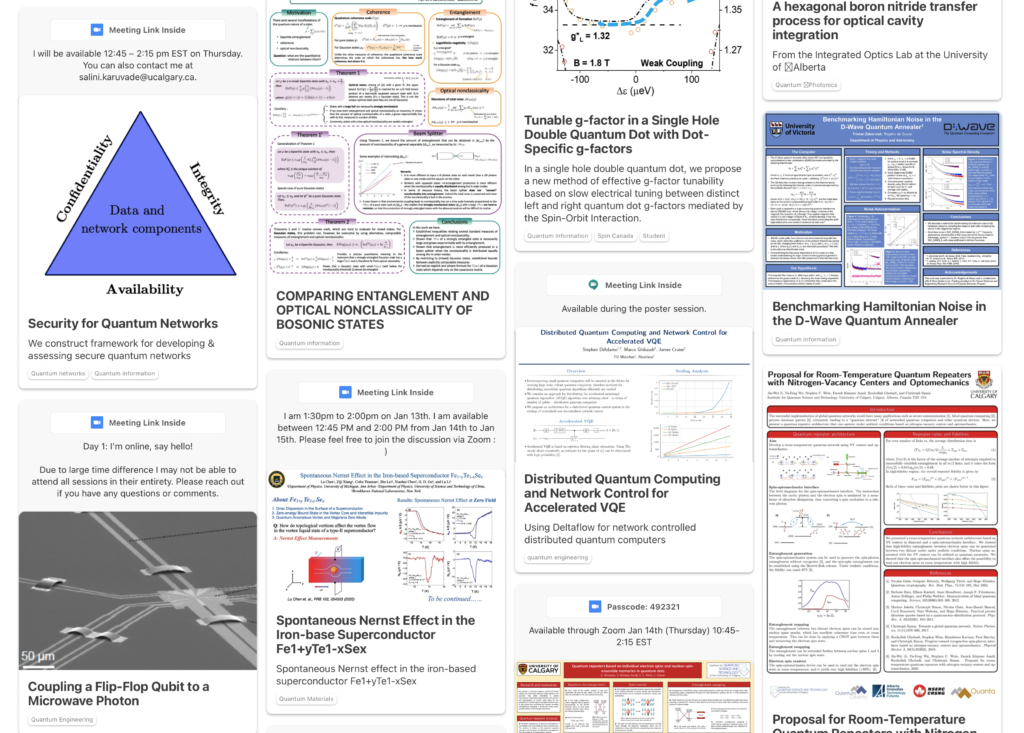
- Easy for student to post their work or interest
- Better control (with different options) over access to all or part of the Makerspace to enable outside communities to participate and support students
- Better access and inclusion of different student groups who may struggle with access due to location, but also enable the formation of dedicated spaces for underrepresented groups. Better targeting of specific student communities with extra resources.
- Enable more efficient networking and posting of interests and research projects and for students to support multiple projects either as an individual or as part of a team
- Support and provide up to date progress postings on projects in support of hackathons spread over weeks, term or year.
- Enable for the spaces to evolve and be permanent, showcasing past projects and providing a repository of student projects over time to inspire and enable future cohorts to build upon past student projects or even to network with graduates around their work.
- Track attendance and engagement by group or student in both the online and in-person
- Online Makerspaces can be created in as little as a few days and can be changed on the fly and combined with student events and student research poster events with live interactions
- Good online Makerspaces supports effective communication whether by chat, comment, video call or calendar scheduling for in-person meetings.
- A good hybrid Makerspace enables quick and easy access into or from the virtual side into the physical side so the virtual side supports / enhances the interaction in-person
- Lastly the ability to deploy an effective and engaging Makerspace at a fraction of the cost of physical space and to change it with minimal effort/cost
Examples of Online Makerspaces in Higher Education
Sustainability Week – University of Toronto, Online Theme Event that crowd-sourced content from students and student clubs to make an engaging and effective week-long event that drove 2X greater student participation and engagement than previous in-person online events.
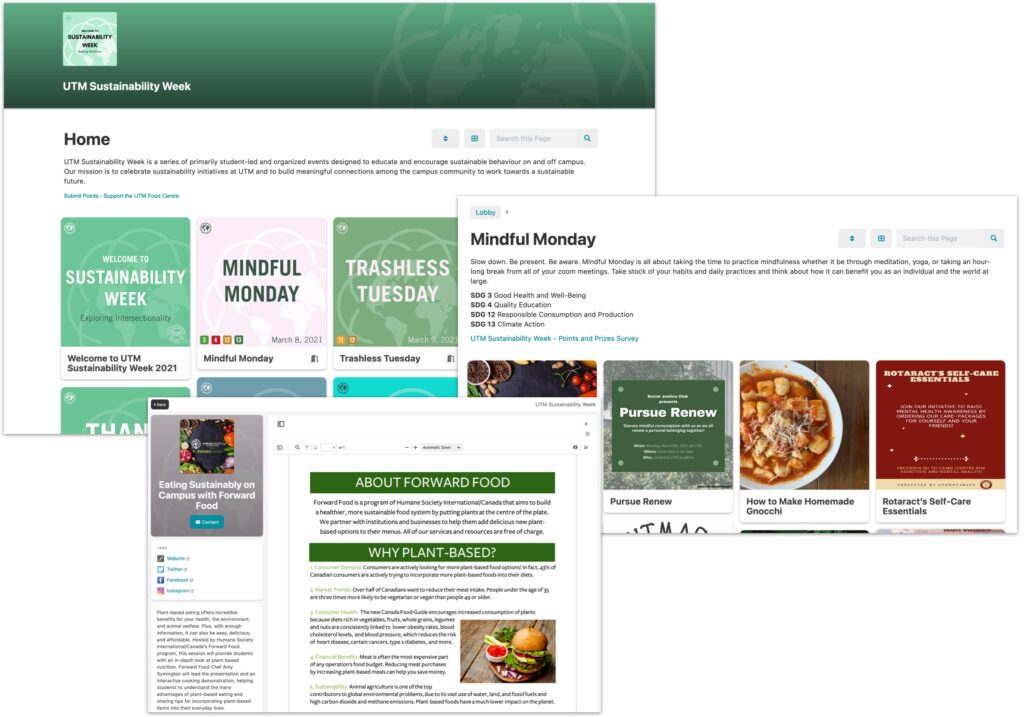
EDGE Impact Cluster Start-up Hackathon – Sheridan College
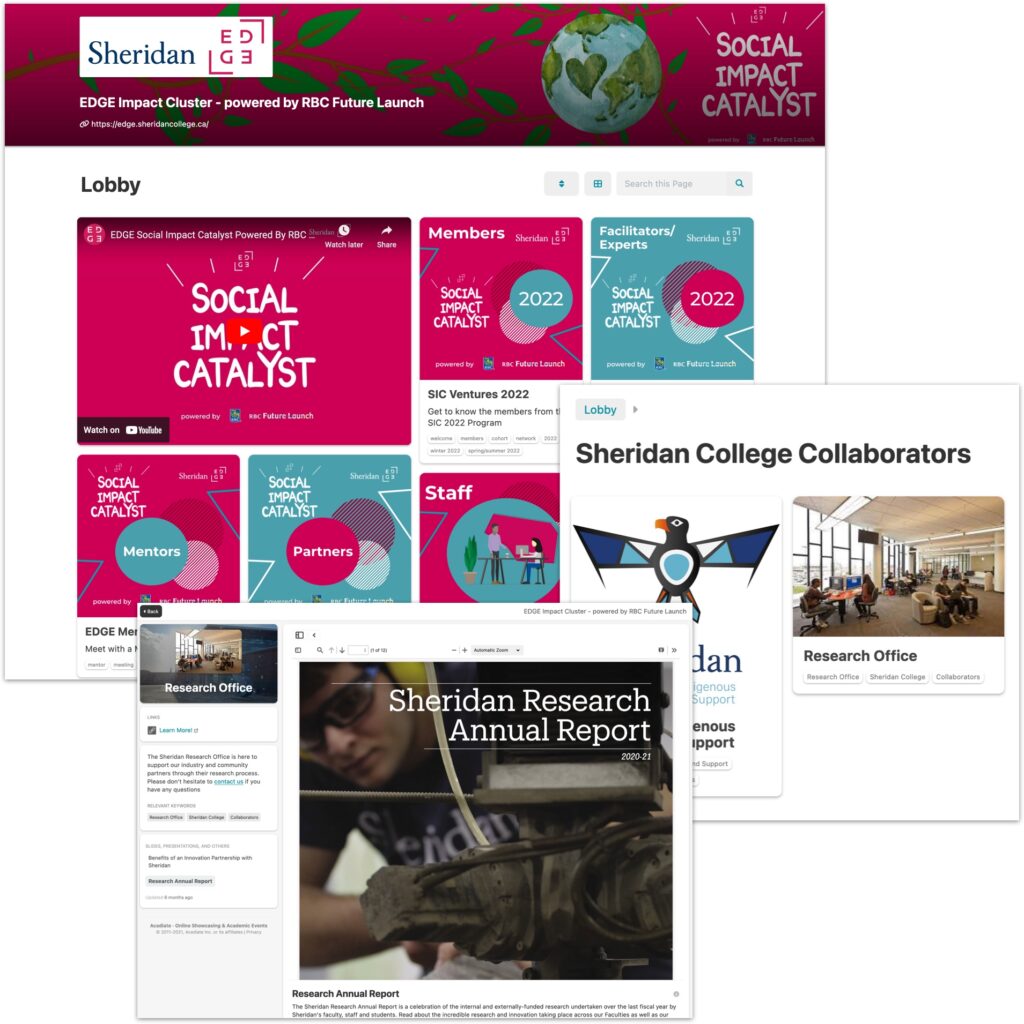
Student Research Event – Georgia State University




